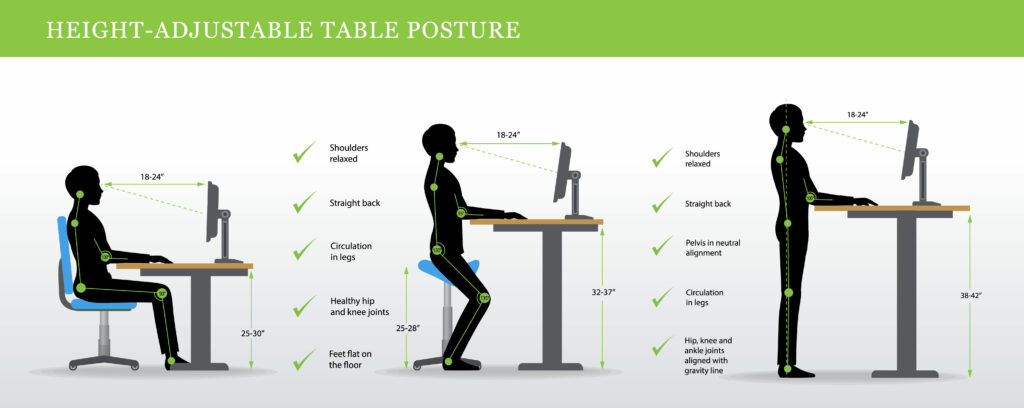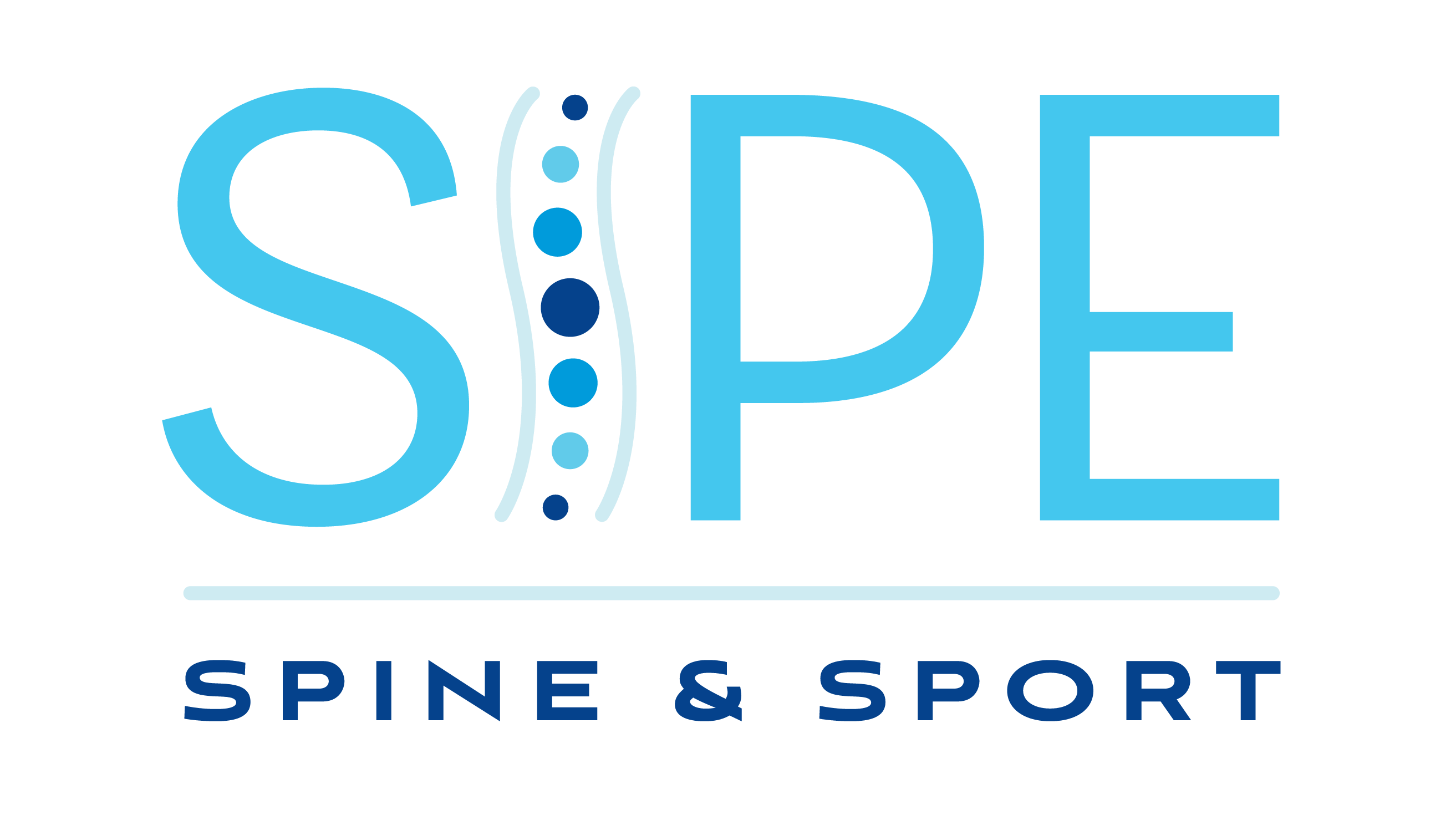
Ergonomics and Posture: Elevating Wellness in Daily Living
Introduction
In our modern, bustling society, prioritizing health and well-being is essential. Yet, the profound influence of correct ergonomics and posture on our holistic wellness is frequently underestimated. As a chiropractic clinic anchored in evidence-based treatments and patient-focused strategies, we emphasize the pivotal role of proper posture and ergonomic habits in averting chronic discomfort, injuries, and fostering a superior life quality.
The Pillars of Ergonomics and Posture
Ergonomic and postural best practices aren’t confined to professional environments. They permeate every facet of our existence, from desk work to heavy lifting, sports participation, and even restful sleep. Grasping ergonomic fundamentals enables us to tailor our surroundings to complement our inherent body dynamics, mitigating undue tension and championing musculoskeletal vitality. (1) Furthermore, as our daily activities evolve with technological advancements, it’s imperative to adapt and ensure that our interactions with devices and equipment don’t compromise our posture. Simple adjustments, like ensuring our computer screens are at eye level or using ergonomic keyboards, can make a significant difference.
The Health Repercussions of Sub-Optimal Posture
Scientific inquiries have underscored the adverse health implications of inadequate posture. Extended periods of slouching or stooping can instigate musculoskeletal disparities, compelling muscles to function sub-optimally and inducing discomfort. (2) Over time, these imbalances can lead to more severe conditions, such as disc herniation, nerve compression, and chronic pain syndromes. It’s not just about physical discomfort; poor posture can also affect our respiratory and digestive systems, potentially leading to a range of health issues.
Workplace Ergonomics
Professional environments are frequent culprits of ergonomic neglect, impacting our well-being. By refining our workstations, we can curtail repetitive stress injuries and unease. (3) Beyond the physical setup, it’s essential to cultivate an organizational culture that values breaks and encourages employees to take short walks, stretch, or even engage in brief relaxation exercises. These practices not only reduce the risk of musculoskeletal problems but also boost productivity and mental well-being.
Postural Consciousness and Daily Life Integration
Recognizing and rectifying our posture in everyday activities is paramount. We advocate for consistent postural vigilance during standing, ambulation, and routine tasks. Simple, targeted stretches and exercises can bolster postural muscles and dispel tension, enhancing our overall posture and comfort. It’s also beneficial to integrate tools like posture-correcting wearables or apps that send reminders to adjust our stance or take breaks. Over time, these reminders can help instill good habits that become second nature.
The Role of Chiropractic Interventions in Postural Enhancement
Chiropractic treatments present a comprehensive solution to bolstering posture and musculoskeletal wellness. Through meticulous spinal realignments, chiropractors can rectify deviations contributing to posture anomalies. (4) Beyond adjustments, chiropractic care often encompasses a holistic approach, including nutritional advice, exercise regimens, and lifestyle counseling. This comprehensive care ensures that patients not only achieve better posture but also maintain it in the long run.
General Posture Ergonomics Recommendations
Ergonomics is the science of designing the job, equipment, and workplace to fit the worker. Proper ergonomic design is necessary to prevent repetitive strain injuries, which can develop over time and can lead to long-term disability. (5) For those who spend a significant amount of time at a desk or computer, it’s essential to maintain a posture that supports the natural curve of your spine. Here are some general recommendations:
Monitor Position: Your monitor should be at eye level, so you don’t have to bend your neck up or down to see the screen. This helps reduce the risk of neck strain.
Chair Selection: Use a chair that supports the lumbar curve of your lower back. Your feet should rest flat on the floor (or on a footrest), with your knees approximately at hip level.
Keyboard and Mouse Placement: Keep your keyboard and mouse close enough so you can use them comfortably with your lower arms parallel to the floor or slightly declined.
Standing Desks: If you use a standing desk, ensure that the screen is at a comfortable height and that you use an anti-fatigue mat to reduce strain on your legs and feet.
Regular Breaks: Every 30 minutes, take a break to stand, stretch, or walk for a few minutes. This helps reduce muscle fatigue and promotes better circulation.

Incorporating these ergonomic principles into your daily routine can significantly reduce the risk of musculoskeletal pain and other related problems. It’s essential to be proactive and make adjustments as needed to ensure you’re working in the most ergonomic manner possible. (6)
At Sipe Spine and Sport, our dedication lies in fortifying your path to peak wellness via ergonomic and postural refinement. Our adept professionals stand ready to assist you in mastering superior posture, alleviating discomfort, and enriching your life’s quality. Reach out to us now for a consultation and embark on your journey to a rejuvenated, well-aligned self.
References
1. Schlussel, A., & Maykel, J. (2019). Ergonomics and Musculoskeletal Health of the Surgeon. DOI: 10.1055/s-0039-1693026
2. Alibegović, A., Hadžiomerović, A. M., Pašalić, A., & Domljan, D. (2020). School Furniture Ergonomics in Prevention of Pupils’ Poor Sitting Posture. DOI: 10.5552/drvind.2020.1920
3. Field, J., & Newell, D. Clinical Outcomes in a Large Cohort of Musculoskeletal Patients Undergoing Chiropractic Care in the United Kingdom. DOI: 10.1016/j.jmpt.2015.12.003
4. Beyan, A. C., Dilek, B., & Demiral, Y. (2020). The Effects of Multifaceted Ergonomic Interventions on Musculoskeletal Complaints in Intensive Care Units. DOI: 10.3390/ijerph17103719
5. Garbin, A., Garbin, C., Arcieri, R. M., Rovida, T. A., & Ana Carolina da Graça Fagundes Freire. (2015). Musculoskeletal pain and ergonomic aspects of dentistry. DOI: 10.5935/1806-0013.20150018
6. Gill, S., & Parker, C. (2017). Scan posture definition and hip girth measurement: the impact on clothing design and body scanning. DOI: 10.1080/00140139.2016.1251621
At Sipe Sport and Spine, we provide a comprehensive range of treatment options that can help you live the life you deserve. Dr. Matthew Sipe is your trusted source for pain relief and holistic care. Schedule an appointment today!

